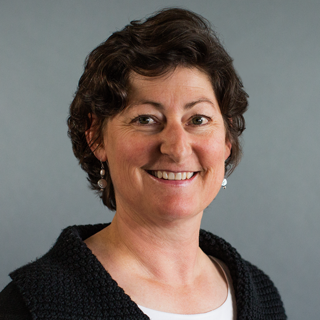
Naomi O. Miroglio
FAIA, Assoc. DBIA
Principal
Kistler Vineyards is a small winery founded by Steve Kistler and his family in Sonoma County, California, in 1978. Its chardonnays and pinots noir consistently get very high marks from notoriously tough wine critic Robert Parker, and its reputation has been legendary enough that the owners have released most of their wines only to customers on their mailing list and to a few select restaurants. There’s a waiting list simply to get on the mailing list. Once there, you have a two-week window twice a year, in the spring and the fall, to make orders. Until recently, Kistler hasn’t even held tastings.
However, times change, and to reach out to the new generation of wine drinkers, Kistler decided to turn a 93-year-old farmhouse in Forestville into a place where visitors can sample a few of its vintages. Kistler asked us to transform the building, which had been remodeled by previous owners in the 1990s, into a venue for small gatherings once a day, about six to eight people at a time.
The 1990s remodel was unfortunate, removing many of the house’s historic characteristics and replacing them with dubious additions, including plastic columns along the new wraparound porch. The remodel was antithetical to what the company’s all about. The winery applies old-world Burgundian techniques to new-world grapes. All of its ten Chardonnay vineyards are planted with the same clone, a California grape the winery’s been using for nearly 30 years, and its four Pinot Noir vineyards rely on two clones imported from Burgundy more than two decades ago. So we wanted the tasting venue to offer the same kind of purity. We would only use honest materials, in keeping with the winery’s values.
Our clients had waited so long to open a tasting venue, they didn’t want people to be disappointed. Their key words for the project were “exclusive” and “distinctive.” We presented them with three alternative interior possibilities for the tasting room interior. One was traditional, one was rustic, and one was modern. After looking at them, Steve Kistler asked us, “Did you ever think about a white room? Because a serious tasting needs to be conducted in a white room.” That sounded fantastic, so that’s what we did.
Really, the space is all about the wine—and the view. The landscape was important. Surface Design, the landscape architect for the project, provided a clean, modern aesthetic. We placed the tasting room on the first floor at the back of the house, where it overlooks the barn and the vineyards. We added new windows on all sides, to create a real “aha!” moment when visitors walk in from the reception area.
We also designed a new fireplace and eliminated elements from the interior that chopped up the space. We designed a tasting table that combined ebonized-stained wood with a white Corian top that was fabricated in Santa Rosa, and we selected all the furnishings. The beautiful rug was custom made for the project. The floor is ebonized wood. There’s a transparent touch screen, so when the winery is serving wines from its other vineyards, they can show details on the screen.
Upstairs is a dining room large enough for 22 people. We opened up the space to views, removed cross ties that were cluttering the cathedral ceiling, and designed a custom chandelier.
On the exterior, we left the wraparound porch, which, although not historic, everybody loved. We did get rid of the plastic columns along the railing and created custom turned-wood columns based on the originals discovered on site.
The idea of only having six to eight people tasting at a time had to go out the window—the tastings were just too popular. Dubbed the Trenton Roadhouse, the venue is holding simultaneous tastings with up to 26 people downstairs, and they’re still having to turn away 60 percent of the requests for lack of room. Now we’re working on transforming a barn on the site into a winery with a tasting venue.
From what we’ve heard, the tasting room has been a great success since it opened up in February—97 percent of guests who aren’t on the mailing list sign up after their visit, and even people already on the mailing list are buying more during their visit.
We’d like to think our design has something to do with that. But we have to admit, it’s really probably all about the wine—it’s that good. It’s exclusive, it’s distinctive, and now it’s just a little easier to get a taste of.



